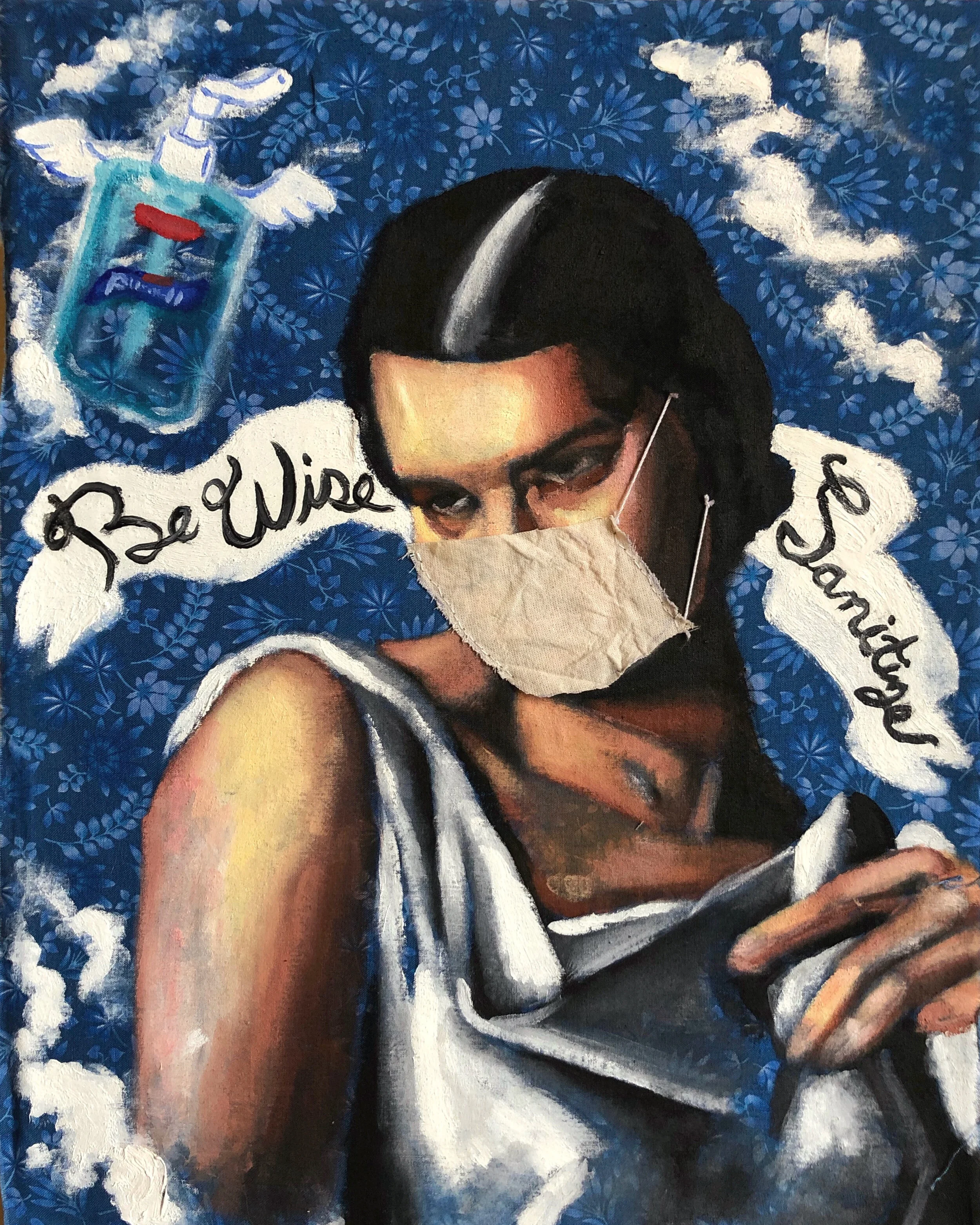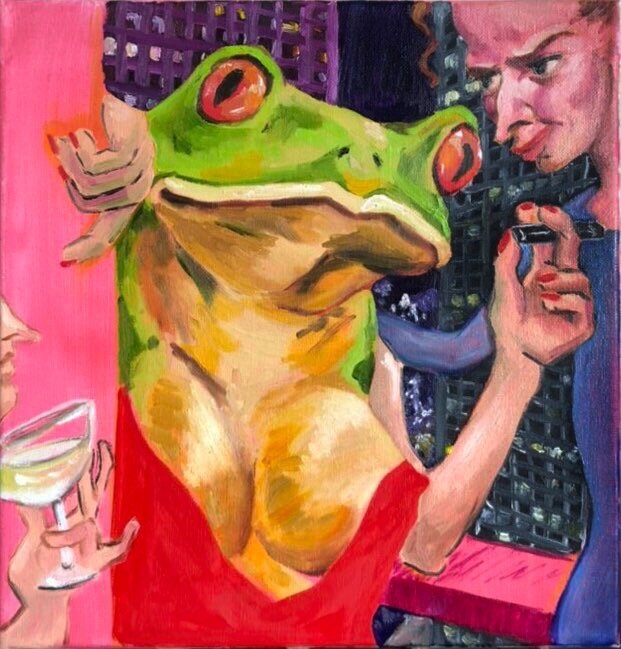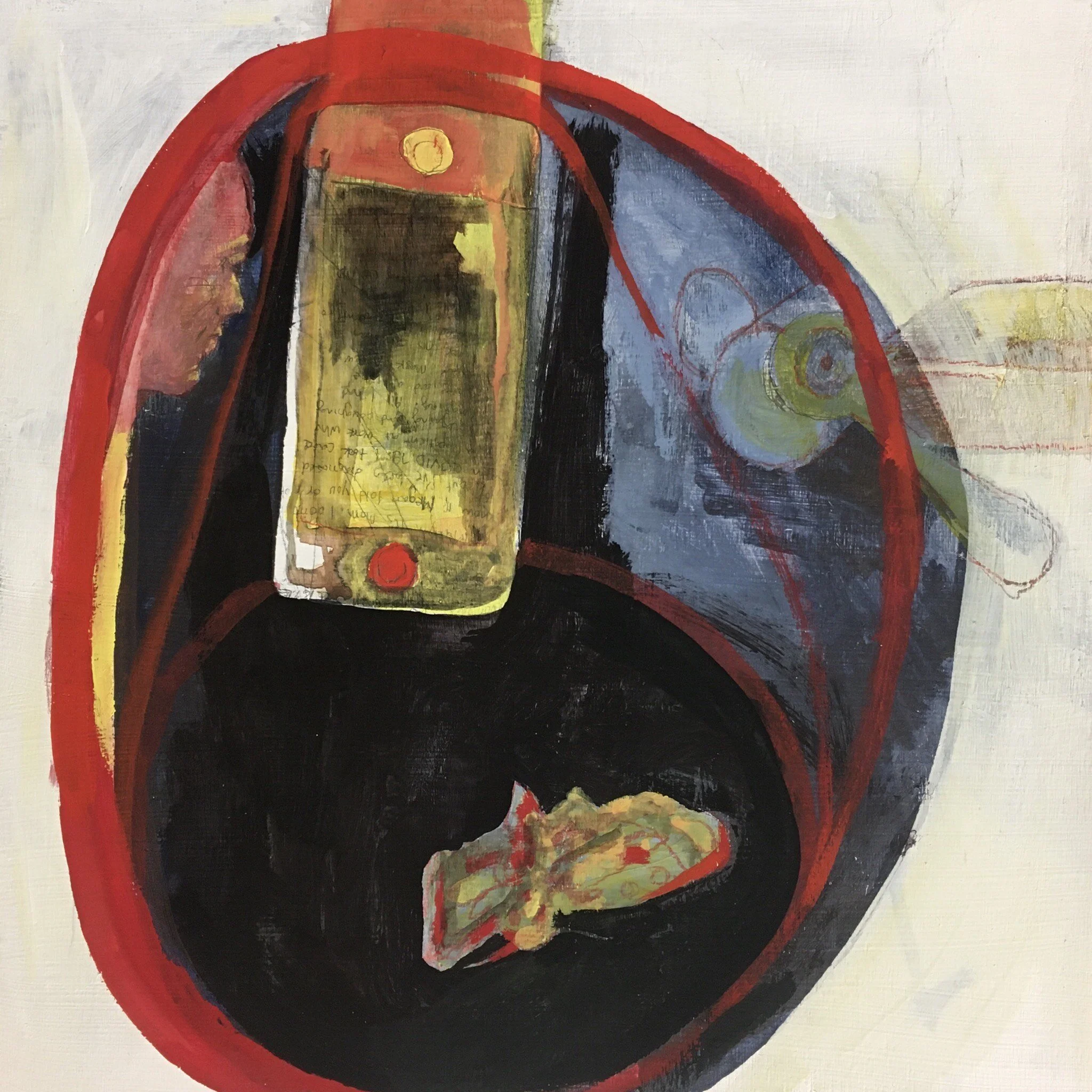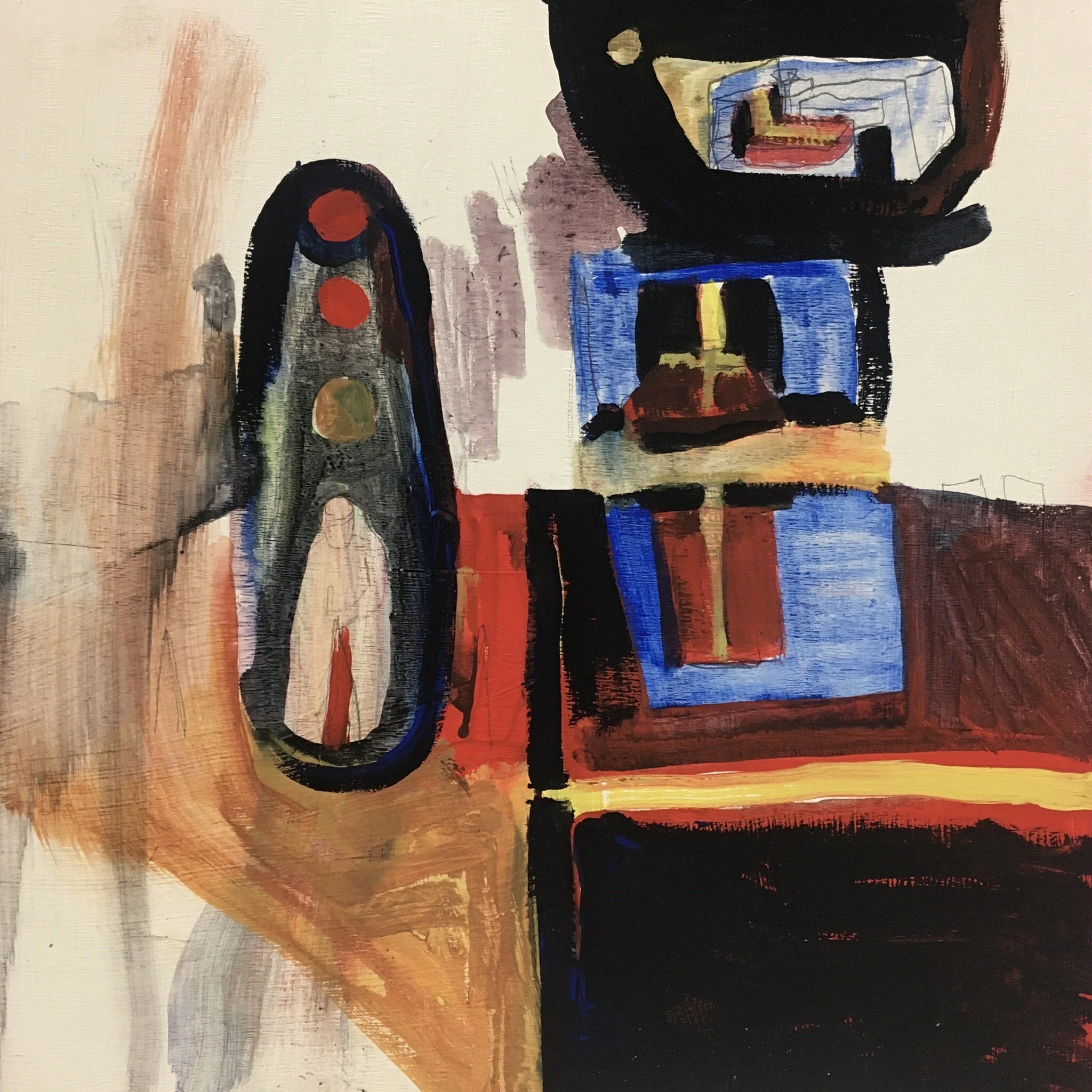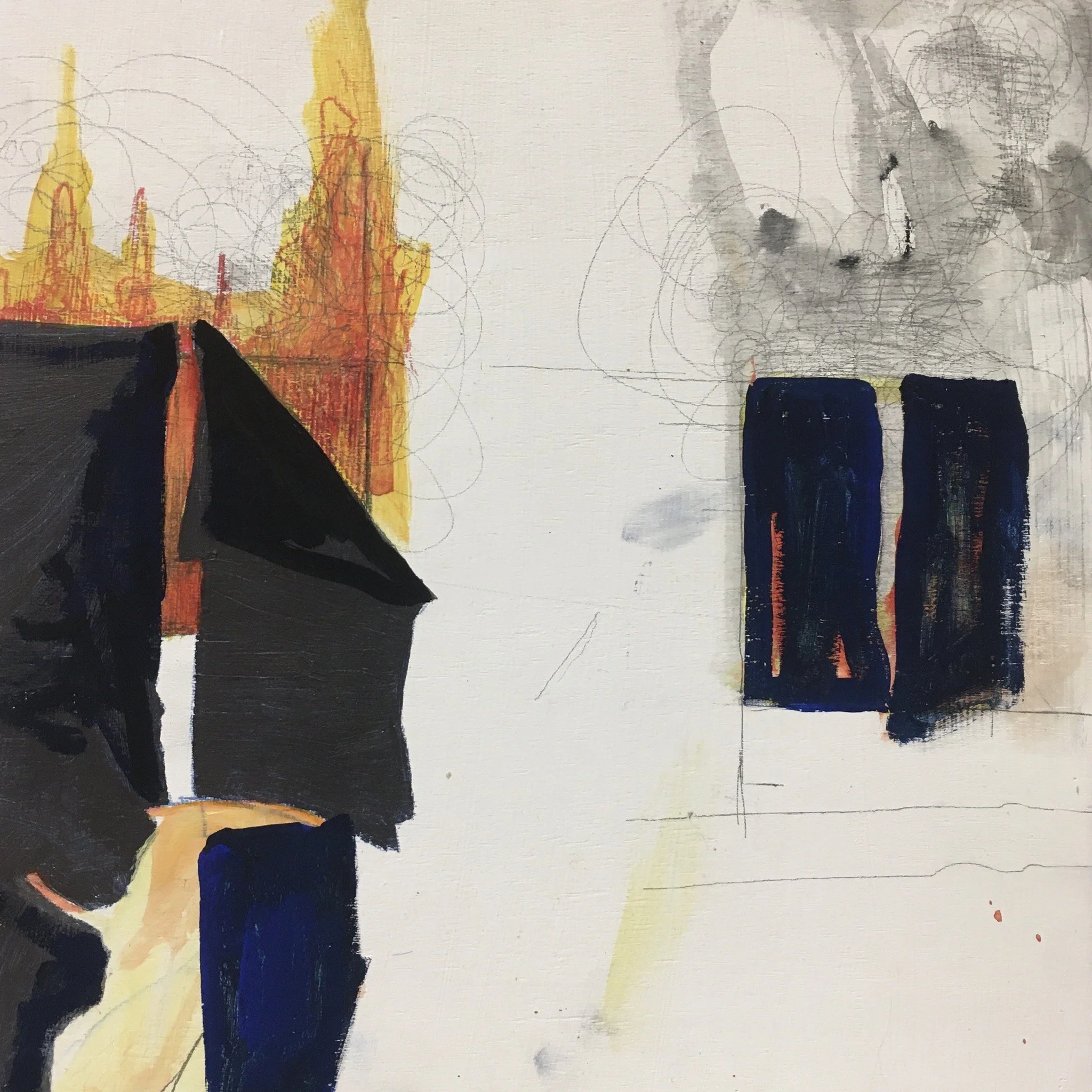distant p la ne t
Jacque White
Matthew Ryan Johnson
the VERSA team asked Jacque and Matt a few questions:
V: Can you let us know a little about you?
J: I was raised in the boonies of Pennsylvania where I got my undergraduate degree before making my escape to the Big Apple. Currently I am earning my Certificate of Fine Art at The New York Academy of Art. I plan to attend for my Masters, but two years didn't seem long enough so I opted for a post-bac program first. Fun Fact: I have a minor in Psychology and a minor in Metalsmithing from undergrad, which probably explains all the weird materials I use in my work mocking psychological issues I face in society.
M: I’m a 3rd year MFA Candidate and educator at the College of Visual Art & Design at the University of North Texas, however I call southeast Michigan home. I’m a multimedia artist with a background in design, painting, new media, and printmaking, but drawing is the primary language I find myself communicating with. I think I’m a hoarder and will end up on TLC’s show someday buried to my neck in the odds and ends I tell myself I need for my work, but my studio mates are assuring me it's fine...Artists get a pass I suppose hah.
V:What do you like most about working where you do?
M: Working at the College of Visual Art & Design in Denton, TX is exhilarating to me. The program here is larger than anything I was used to, which made me feel like a small fish in a large pond, however it’s given me valuable teaching opportunities and a large network of colleagues and mentors that have helped me develop my studio practice and find my footing and confidence as an educator. I’m given a lot of freedom and encouragement in my courses to design curricula that are centered around my own studio practice and actual working processes, making teaching feel natural. I’m surrounded by a massive amount of concentrated creative energy, resources, minds and support that I find energizing and inspiring. The community here is not just creative, I’ve found Denton progressive, motivated, and hard working towards important cultural and social development. Originally, location was a worry of mine when considering moving to Texas for grad school, but I have been pleasantly surprised at how incredible the DFW community has been in the face of adversity, quarantine, and a difficult political chapter. I also can’t help saying “y’all” now.
J: I love working in my apartment, especially with the COVID crisis happening because I have a fairly large room (via NYC standards) and my neighborhood is very peaceful with 4 grocery stores within walking distance ensuring I have plenty of snacks. I'm also close to a huge park so I can always refresh myself outside while having a very short commute to Manhattan and my school!
V: What ideas or theories are you exploring in your practice? How has that changed over time?
J: My work has been focused on the female gaze and tackling male-gaze stereotypes for a few years now. It started off fairly passive, but as my technical skill has deepened, so has my content. Steeped in ironies of societal ideas of how women should look or behave, an ever changing world for better or for worse, I use a collage aesthetic to heighten these variances of woman-hood. There is an indexicality to the textures and objects I put upon the canvas, projecting these challenges into the viewer's space, thus becoming tangible. As I creep closer towards my own exploration of sexuality, so does my work. We work almost hand in hand speaking ironically of the male gaze of voyeurism. This is where my palpable female gaze speaks on marginalized people and issues.
M: My work has changed quite a bit over the last few years, I used to make work about being alive, and being sick. I was very focused on my presence, fragility, and the ephemerality of life after treatment for cancer in 2015. For years I made work directly in response to that trauma, but have evolved and grown. I’m still fixated on what it means to be alive, to be here, and to be a small spec in the universe, but my investigations and research, whilst still responsive to the world around me, are no longer panicked, angered, and pained. For the last year or so in the studio I’ve found myself obsessing over my memories of home. I read a book that suggested memories change each time they were recalled, and I began to question things, and how reviewing a memory with a more subjective, phenomenological lens would alter my conclusions. I think I found some kind of spiritual or psychic comfort in the process. Concepts like inanimate objects and people as present bodies, or vessels for experience and the psychology of architecture have given me a new way to understand both my current surroundings and my past. The organization of symbols and images into myths is something I’ve always been subconsciously subscribed to but recent development in my research has allowed me to more acutely see, analyze and document such relationships.
V: What is your process like?
M: My process works in two ways really, the first starts outside of the studio in research and meditation. I intuitively collect stuff-- articles, books, ephemera, diagrams, words, objects, and images and make lists in my sketchbooks, rarely drawings, plotting or graphing the connections I find between them to my present life and experience. The appropriated, gathered information or images get reconfigured and filtered with my own icons to create a new personal mythos and language that can be considered collage but doesn’t always physically manifest as such, if anything it feels more like a spell or alchemy. Simultaneously, I’ve been working in the studio on a body of procedural drawings that aim to document the mutation of memories as they are recalled. I’ve been making hundreds of drawings about home, profiling the physical, social, and psychic spaces. Creeping slowly closer to the end of my twenties and moving across the country away from my entire family has had me reflecting on the invisible relationships I have or have lost with the people and spaces back home, and with my younger self.
J: My process is mostly structured. Usually I get an idea, via something that has happened to me and I need to process it, someone has said something sexist to me (most of the time they don't even realize it), or I witness something in life that is too powerful to ignore. Then doodle it in my notebook in class, on the subway, or as of recently, while in zoom meetings that I should be paying attention to. Then I move on to photoshop where I will adjust and gut and layer an image, which I can either get right the first time (hahahaha) but it usually sits on my screen for a while before I'm satisfied. Once I'm happy with the crafted reference image, I lay it out on the canvas and work from there. Originally I only worked in oil, but its harder to adhere things to oil so now I work mostly in acrylic, which I work layer by layer, then end with the application of materials. Occasionally the material gets mixed into the paint, which I find so much more satisfying.
V: How many pieces do you work on at the same time?
J: This is a trick question. I've been working larger these days so I tend to stick with plowing straight through the whole thing until its done. However this takes a lot of time, so often I'll do a one or two day smaller side piece, just to air out my brain and keep my eyes fresh. Currently I am finishing up my largest piece yet, stretching a small canvas for a side piece, halfway through a medium sized canvas, and working on photoshop sketches for 3 or 4 potential new pieces.
M: Sheesh, probably at least 10 at any given time. I try to work on one or two larger, more focused projects at once, but the way I work has evolved to a point where a single painting births multiple drawings from itself along the way, which in turn become their own unique pieces at some other point in time. I cannot just stick to one thing at a time no matter how hard I try. I often edit, clone, reuse, and repurpose an image or piece. I will cut up a painting and reassemble the parts, or save them for later until it feels right to use them, if ever. Often I trace or photograph a portion of a piece at some point during its life, and set it aside or archive it for later use. This is an impulsive and intuitive habit. My relationships with things change, and as a result the work does too. I like that all my artworks infect each other, or are subjected to one another. Ephemera is an important part of that process and to me, but recently I’ve found a way to document and preserve those special moments before they are cross pollinated and combined into a new work.
V: Do you have a mentor OR piece of advice which has influenced your practice?
M: I have many mentors, truly. I have been so immensely lucky to work with some fantastic artists and study under amazing professors, all of which have helped me navigate my artistic and psychological growth. I have many things I want to share with my work, but found it most successfully relatable and honest when I stopped trying to make it relatable, and I don't think I would have that confidence without the support and affirmation of my mentors.
J: Right now I have several mentors, as I am finishing my CFA at the New York Academy of Art. Which is fantastic. Every week an esteemed critic comes in (via Zoom) and we talk about my work. Mostly I let them do the talking and try to absorb as much as I can. In the Fall of 2019 I came to know an artist who really inspired me and one thing he would always ask me when I talked about my ideas was "Why?" aka, how can you make this better? Clearer? The point is to communicate as efficiently as possible, only have bells and whistles if they actually add to the piece. No more. No less.
V: How does it feel to show work online? (Have you shown work online previously?)
J: It’s strange, but almost a relief. As much as I want to have my work up in a gallery making money (don't we all), it can be expensive shipping work, especially work that has stuff on it or is large. What an exciting future I have ahead of me. I have shown online before, with the very wonderful magazine Pikchur. They were incredibly sweet and supportive. This will be my first official online show, which is actually very exciting, I'm hoping this leads to more people seeing the work!
M: I’m so happy to be given the opportunity to share inside a digital space and contribute art to the screens of the isolated, however as an artist concerned with ephemera I find digital versions of my work always a little ironic. Creating a copy of my art that will live forever archived on a hard drive that ends up in a landfill or in the cyber-ether purgatory grants the piece immortality it otherwise would have never had. That is something I often think about.
V: Jacque, your use of 3D objects and materials is a key aspect of subverting the objectifying gaze. What's your process for selecting these materials?
J: So this is a tie-in with questions 3 and 4. I have three large bins full of weird materials I have collected over the past 2 years. Sometimes I know from the start what I want to use. Other times I have the stuff and I make a picture from it. Mostly it's just a working inventory I have, with a general theme surrounding patterns, textures, and recognizable objects that are affiliated with femininity or beauty standards. I've cut up bras, underwear, curtains, dresses, bags, you name it, I probably have a painting with it on there.
V: Matt, what role does narrative play in your work, as it relates to memory and your collection, reuse, and layering of drawings?
M: Narrative is skeletal, yet essential to my content and often informs my compositions. However, my stories I source and respond to aren’t necessarily linear nor meant to be followed. When working from memory, I often cannot fully remember unless I’m drawing, so I use the work as a way to unearth formative or repressed memories, reclaiming the story and my feelings surrounding it. Reusing, collecting, and layering of my drawings alters that narrative, allowing me to fabricate alternative outcomes, respond differently to situations in my past, or create new scenarios for myself that never did occur -- a false memory.
V: What are you reading right now?
J: I am currently reading a collection of essays by Angela Davis, The Beautiful Bureaucrat, and The Anxiety of Influence by Harold Bloom.
M: -Simulacra and Simulation (The Body, In Theory: Histories of Cultural Materialism), by Jean Baudrillard -Poetics of Space by Gaston Bachelard -Psychology and Alchemy by C.G. Jung

